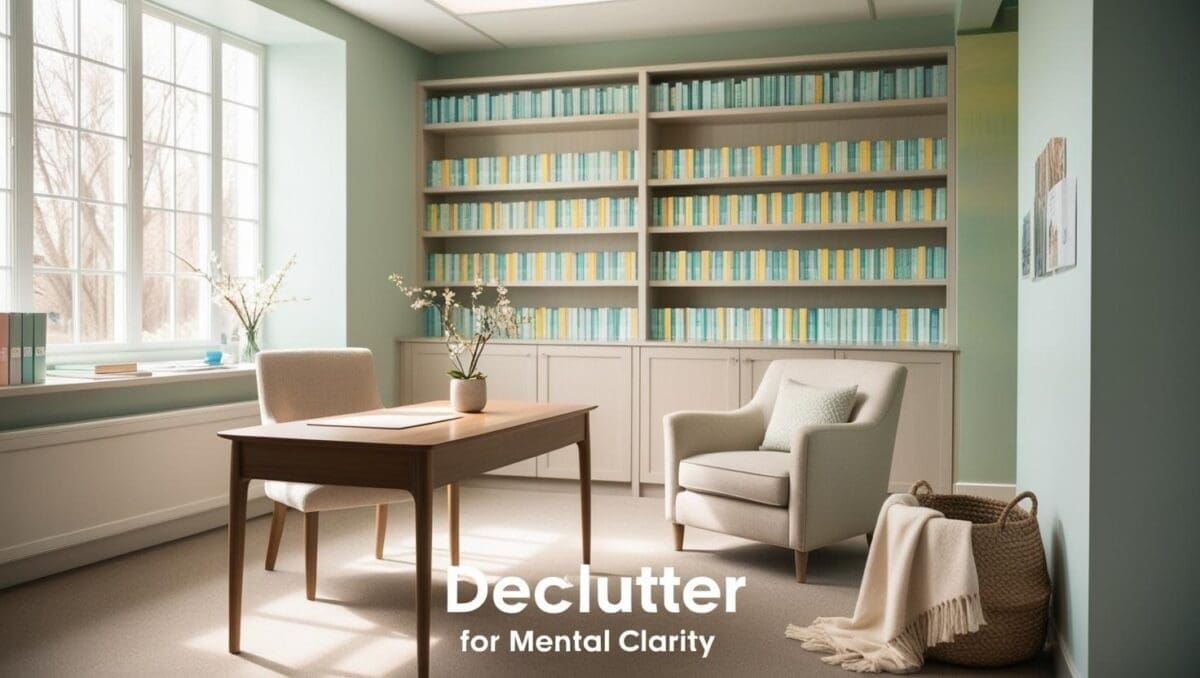Designing a therapy room for children is about much more than creating a fun or colorful space. It’s about crafting an environment where young clients feel safe, supported, and empowered to explore their emotions. Every choice — from furniture layout to wall decor — can either support or hinder the therapeutic process.
In this guide, you’ll learn how to set up a child therapy room that nurtures emotional regulation, inspires creativity, and invites connection. We’ll move beyond generic ideas and explore practical, developmentally supportive strategies you can use to transform your space.
This post may contain affiliate links, which means I may earn a small commission at no extra cost to you if you choose to make a purchase. I only recommend products I genuinely find helpful in creating warm, therapeutic spaces.
Core Principles of Child Therapy Room Design
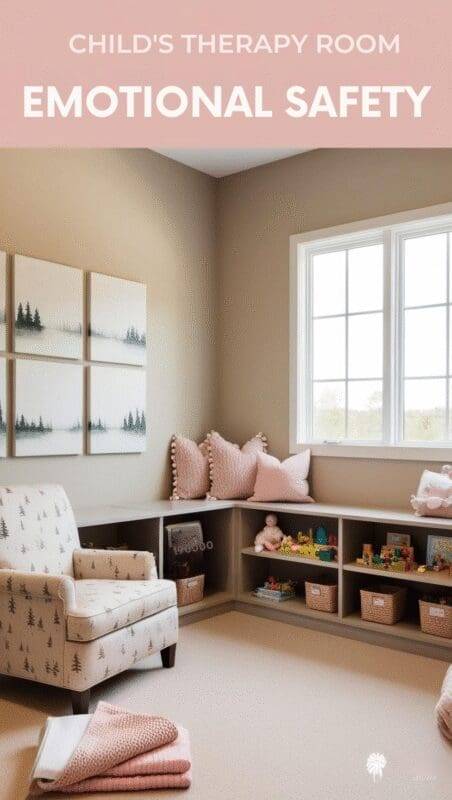
Emotional Safety First
Children need clear visual signals that a space is safe and welcoming. Warm lighting, soft textures, and predictable organization all play key roles. When children can easily understand their surroundings, anxiety decreases and engagement improves.
- Use muted, soothing color palettes.
- Keep decor simple and avoid overwhelming sensory input.
- Maintain a consistent, uncluttered layout.
Empowerment Through Environment
The room should invite children to make choices and interact with their environment at their developmental level.
- Use low, open shelving for toys and materials.
- Choose child-sized furniture that allows independent use.
- Offer visible options for activities, empowering children to take ownership of their sessions.
Multi-Sensory Engagement
Engaging multiple senses helps children regulate and express themselves more fully.
- Include tactile materials like felt, velvet, and wood.
- Offer visual stimuli through calming art or interactive boards.
- Incorporate gentle auditory elements, such as soft music or nature sounds.
Create Emotional Zones Within the Room
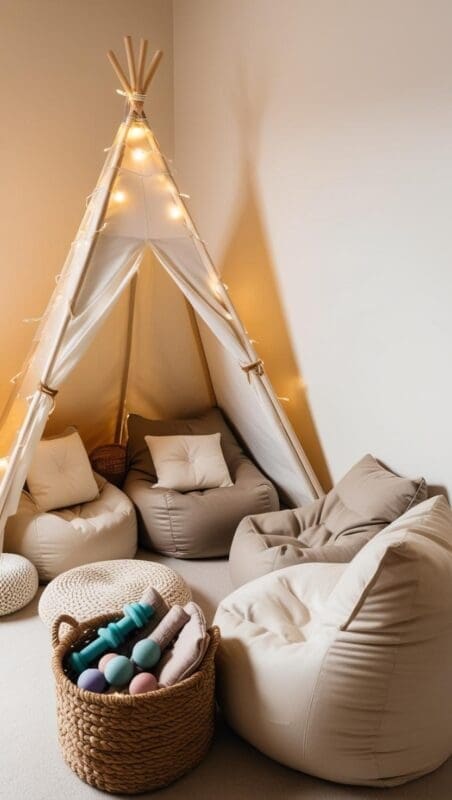
Cozy Regulation Corner
A quiet, soothing space where children can retreat when they need to self-regulate is essential.
- Use soft lighting or a small canopy tent.
- Include bean bags, weighted blankets, and a basket of fidget tools.
- Decorate with calming imagery like gentle landscapes or affirming phrases.
Movement and Play Space
Children often regulate emotions through movement. Provide a flexible area for physical expression.
- Keep an open floor space with a soft rug.
- Add movement tools like therapy swings, mini trampolines, or balance boards if space allows.
- Use safe, soft furnishings that encourage active engagement.
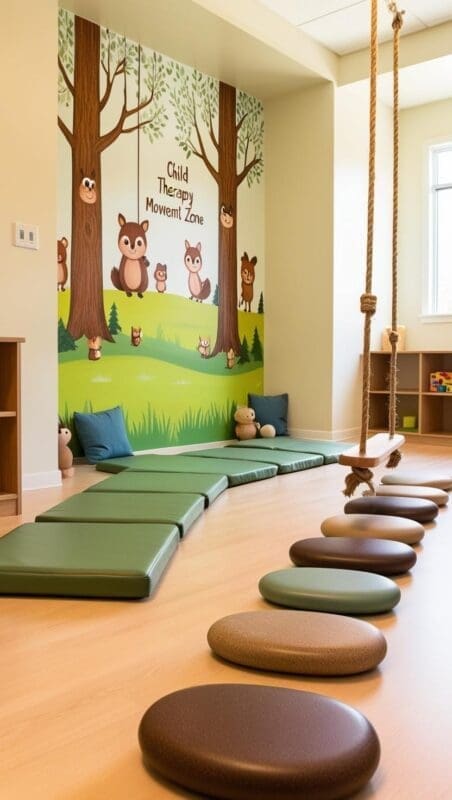
Creative Expression Zone
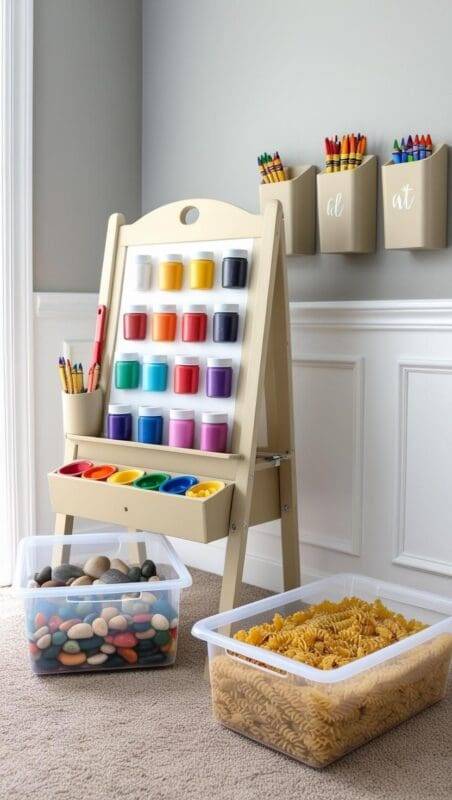
Creativity allows children to express emotions they may not yet have words for.
- Provide a child-height art easel stocked with washable paints, markers, and crayons.
- Include sensory bins filled with rice, sand, or kinetic materials.
- Install a wall-mounted organizer for easy access to art supplies.
Interactive Lego Wall for Creativity and Fine Motor Skills

A standout feature in any child therapy space is an interactive Lego wall. It invites children to build vertically, tell visual stories, and focus their energy in a calming, creative way.
Benefits of a Lego wall:
- Encourages imaginative play and narrative building.
- Develops fine motor coordination and bilateral hand skills.
- Offers a quiet, tactile sensory activity.
- Supports symbolic expression of feelings and experiences.
To create one, install large Lego baseplates at child height along one wall. Keep a clear bin of assorted Lego pieces nearby, sorted by color or type. Children can build “Feeling Towers,” create peaceful scenes, or work collaboratively, all while engaging their senses and imagination.
✨ Want to Build Your Own Therapy Lego Wall?
This child-height Lego baseplate set is a perfect foundation for creating a vertical building wall in your therapy office or playroom. Pair it with colorful bricks to inspire emotional expression and sensory play.
Shop the Lego Wall Set →Choosing Colors and Textures
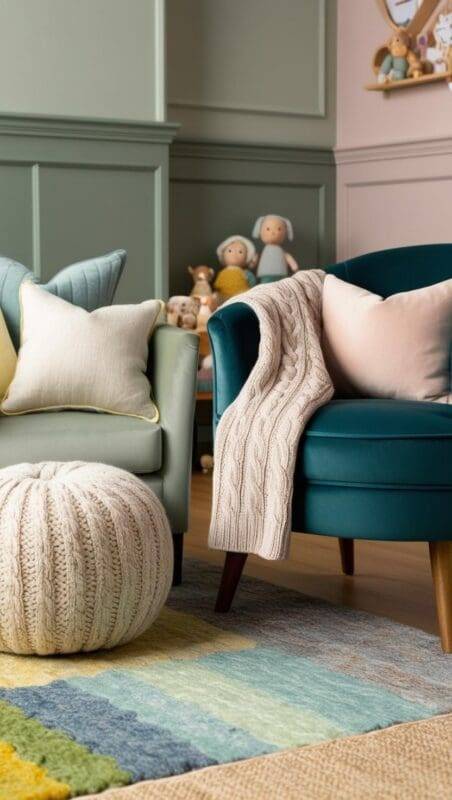
Soft, muted palettes promote emotional regulation far more effectively than bright primaries.
- Opt for sage greens, dusty blues, soft peach, and warm grays.
- Layer textures like wool, cotton, velvet, and linen for tactile comfort.
- Choose furniture with rounded edges and natural materials to create a soothing environment.
Sensory-Smart Lighting and Sound
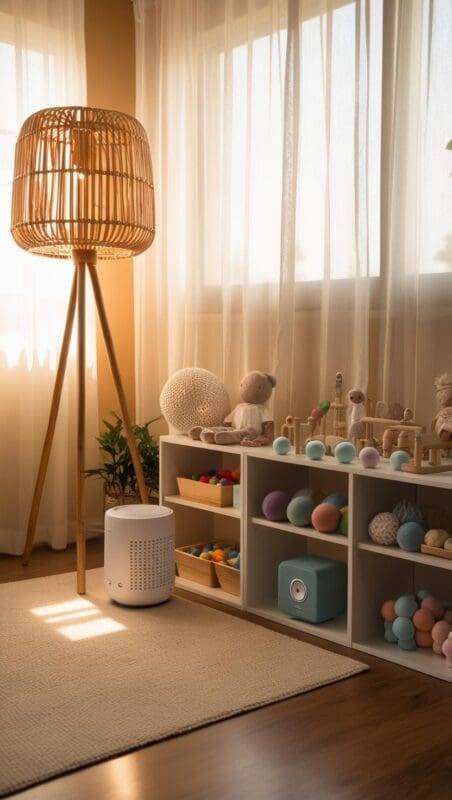
Lighting and sound are crucial elements often overlooked in therapy rooms.
- Use warm-toned, dimmable lighting instead of harsh overhead fluorescents.
- Diffuse natural light with sheer curtains.
- Play calming background music or ambient sounds (nature sounds are ideal).
- Install thick rugs, fabric wall hangings, or acoustic panels to soften noise and create a cocoon-like feel.
Decor Elements that Support Growth and Healing

Symbolic Wall Art
Wall art should inspire growth and safety.
- Choose imagery like growing trees, butterflies, or flowing water.
- Incorporate simple affirmations such as “You are safe here” or “All feelings are welcome.”
Interactive Wall Features
Beyond static art, interactive features can engage young clients more fully.
- Magnetic storyboards where children can create scenes.
- Tactile walls with sensory panels (textures like soft fabric, smooth wood, or bumpy surfaces).
- Visual storytelling boards to support narrative therapy techniques.
Practical Storage Solutions for Organization

Organization reduces cognitive overload for children.
- Use soft baskets, labeled bins, and low cubbies.
- Rotate toys and activities seasonally to keep the room feeling fresh but not overwhelming.
- Keep daily-use materials easily visible and accessible to empower independent choice-making.
Sample Layout Plan
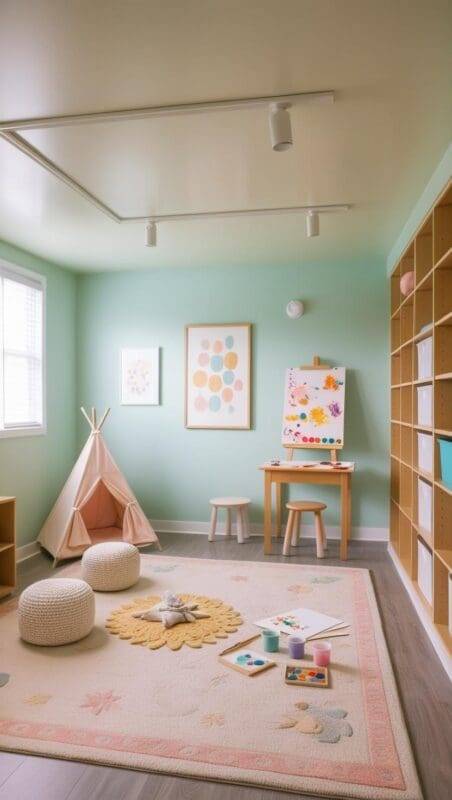
Visualize the room in zones:
- A regulation corner tucked into a quieter part of the room.
- Open central space for movement.
- A wall or corner dedicated to art and creative expression.
- Storage areas placed around the perimeter for easy access but minimal distraction.
Final Tips for Creating a Therapeutic Atmosphere
- Curate intentionally rather than filling every space.
- Personalize with small touches (seasonal decorations, special affirmation boards).
- Refresh small details seasonally to mirror natural cycles of growth and change.
Conclusion
A well-designed child therapy room can be an active, supportive participant in the therapeutic process. By creating zones that support regulation, creativity, and empowerment, and by intentionally choosing colors, textures, and decor elements, you build an environment where emotional growth flourishes.
Even small changes, like adding a cozy regulation corner or an interactive Lego wall, can transform your therapy space into a safe, inspiring haven for young clients.
You also might like this article 7 Inspiring Ways to Transform Your Child Therapy Office Decor

About the Author
Hi, I’m Eve, a former school counselor with a master’s degree in School Psychology and a passionate advocate for children and families navigating sensory challenges. As a mom of children with sensory sensitivities, I deeply understand the journey special-needs parents face, and I dedicate myself to researching and sharing practical solutions to help children thrive and feel comfortable in their bodies. My goal is also to empower counselors, therapists, and psychologists with creative strategies and supportive resources to enrich their everyday practice. When I’m not writing or exploring new therapeutic approaches, you’ll find me spending quality time with my family and continually seeking inspiration from everyday moments.

